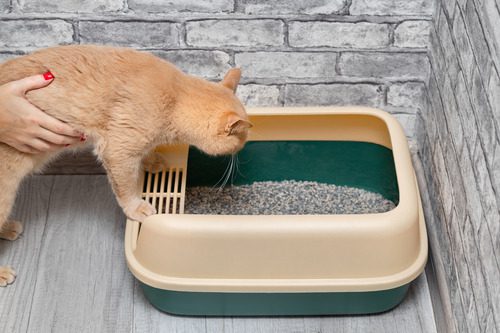Welcoming a new cat into your home comes with plenty of excitement—and a few questions, especially if your feline friend isn’t already litter box trained. While many cats instinctively seek out a place to eliminate, others may need a little encouragement and structure. If you’re wondering how to train a cat to use a litter box, the good news is that with the right setup, consistency, and a calm approach, most cats pick it up quickly. Let’s walk through everything you need to know to set your cat up for success.

Why Some Cats Need Litter Box Training
Although cats have a natural instinct to bury their waste, some may not take to a litter box right away. Kittens, especially those separated from their mothers early, might not have learned proper elimination habits. Adult cats that have lived outdoors or in shelters may need time to adjust to new routines. Other cats may avoid the litter box if something about it feels off to them, such as its location, cleanliness, or the type of litter used. Understanding your cat’s background and habits will help you tailor your training strategy. The goal is to create a litter box environment that meets your cat’s needs and makes using the box the most appealing option.
Setting Up the Right Litter Box Environment
A successful training experience begins with creating a space where your cat feels comfortable and safe using the litter box.
Choose the Right Litter Box
Select a litter box that fits your cat’s size and preferences. Kittens and small cats may do best with a shallow box that’s easy to climb into. Larger adult cats need a box with enough space to turn around and dig. Some cats prefer open boxes, while others may feel more secure with a covered one. If you’re not sure what your cat prefers, start with an uncovered box and observe how they react.
Use a Litter Your Cat Likes
Cats can be surprisingly particular about the texture and scent of litter. Unscented, clumping litter tends to work well for most cats. Avoid heavily scented varieties, as they can be overwhelming to a cat’s sensitive nose. If your cat refuses to use the box, experiment with different types of litter until you find one they accept.
Place the Litter Box in a Quiet, Accessible Location
Privacy and accessibility are key. Choose a spot that’s quiet and free from heavy foot traffic or loud appliances. Avoid placing the litter box near your cat’s food and water dishes. If your home has multiple levels or larger square footage, provide more than one litter box to make access easier.
Step-by-Step: How to Train a Cat to Use a Litter Box
Once your setup is ready, consistent training and gentle encouragement will help your cat learn where to go.
Introduce Your Cat to the Litter Box
After bringing your cat home, gently guide them to the litter box. Let them sniff around and explore the area on their own terms. Some cats will use it right away, while others may need a little more time. You can place your cat in the box after meals or naps—times when they’re more likely to need to go.
Encourage Consistent Use
Pay attention to your cat’s behavior. If they begin sniffing or scratching in inappropriate areas, calmly redirect them to the litter box. Don’t scold or punish; instead, praise or pet them when they use the box correctly. If accidents happen, clean the area thoroughly with an enzymatic cleaner to eliminate lingering odors that could attract repeat incidents.
Use Positive Reinforcement
Reinforce good habits with praise and gentle rewards. Some cats respond well to treats or affection after using the box. Keep training sessions low-stress and avoid drawing negative attention to mistakes. Cats learn best in a calm, supportive environment.
Troubleshooting Common Litter Box Issues
If your cat is avoiding the litter box, it’s important to identify the cause and make appropriate changes.
Medical Issues
Any sudden change in litter box behavior could indicate a medical problem such as a urinary tract infection or constipation. Always consult your veterinarian if your cat is straining, vocalizing in pain, or avoiding the box completely. These issues need professional attention.
Cleanliness Matters
Cats prefer a clean place to go. Scoop solid waste at least once a day and change the litter regularly. Wash the box with mild soap and warm water weekly. Avoid harsh cleaners with strong smells that could deter your cat.
Litter Box Aversion
If your cat uses the box inconsistently, consider whether the location, size, or litter type is causing discomfort. Try moving the box to a quieter spot or experimenting with different litter textures. In multi-cat homes, make sure you have enough boxes—ideally one per cat, plus one extra.
Litter Box Training for Kittens vs. Adult Cats
Training needs can vary depending on your cat’s age and previous experience.
Kittens
Young kittens may require closer supervision and more frequent litter box introductions. You may need to physically place them in the box after meals, playtime, and naps until they begin going on their own. Keep boxes easily accessible and avoid covered options until they’re more confident.
Adult Cats
Adult cats transitioning from outdoor or shelter environments might take longer to adjust. Be patient and offer consistency. Sometimes using soil-based litter at first can help ease the transition for outdoor cats, gradually switching to traditional litter as they acclimate.
When Should You Call for Help?
If your cat continues to avoid the litter box despite your best efforts, professional guidance can help. Behavioral concerns can sometimes point to underlying health issues or environmental stressors. The team at Millis Animal Hospital is here to support you and your cat every step of the way. To schedule an exam or behavioral consultation, call us at 508-376-5317 or make an appointment online.
Recent Posts
About Us
Millis Animal Hospital is a privately owned AAHA-accredited, Cat-Friendly Certified practice staffed with Fear Free Certified professionals. We know a thing or two about treating pets and their families the way they deserve, with excellent preventive care and surgical services tailored to your individual needs.
